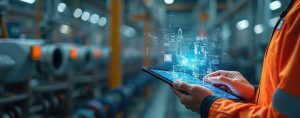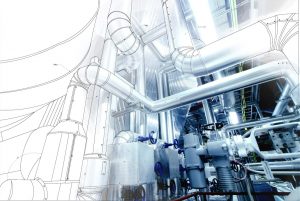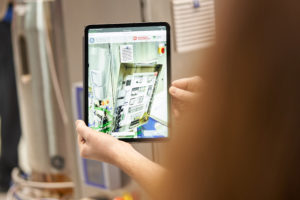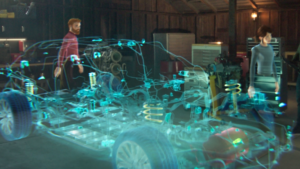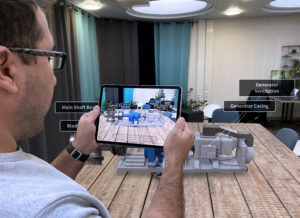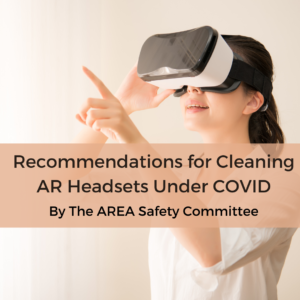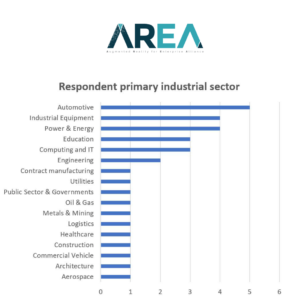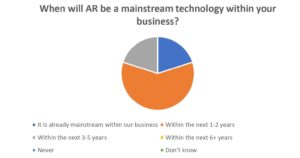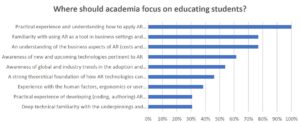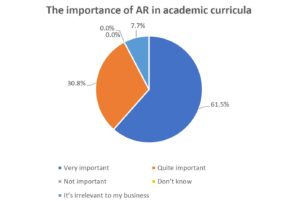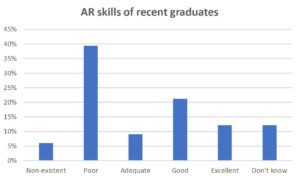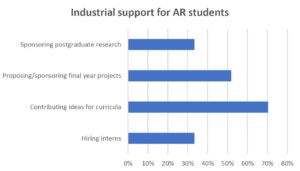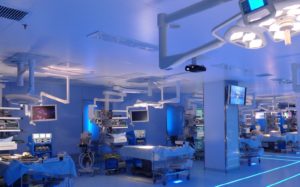With a heritage dating back more than a century, Rockwell Automation has long been at the forefront of industrial automation. Today, the $7 billion company offers a broad array of solutions and services that bring “The Connected Enterprise®” to life, including automation systems, integrated control systems, and factory software. We spoke with Rockwell’s Andrew Ellis shortly after the company joined the AREA as a Sponsor member.
AREA: Everybody knows Rockwell Automation – it’s a huge company with lots of different businesses in industrial automation. Could give us a perspective on your specific organization within Rockwell?
Ellis: Sure. I’m the director of our global tech consultants within a new office called the Digital Technical Office. Our tech consultants in the field help our customers align their digital transformation requirements with our capabilities. I also oversee a group of experts in different disciplines, including XR, Extended Reality. Again, our role is really working with the customers to understand their challenges and then align our portfolio to help them along on that journey.
AREA: Did the interest in XR come about because customers were asking about it, or was it because you looked into the future and said this is something we need to get into?
Ellis: When I first looked at AR several years ago, I was a bit skeptical, but it didn’t take long to change my point of view completely. Today, I don’t know how, in the near future, any customer will be able to move forward with a modern manufacturing facility without AR. It’s now similar to how it was in my early days of automation and IT/OT; there’s a lot of education going on with our customers to make them aware of the use cases, the problems AR solves, and the real benefits in an industrial landscape. For me personally, I’ve done a complete 180-degree turn around from “not sure” to “wow, you’ve got to go all-in on AR.” From our vustomer’s point of view, more and more they are asking for it, there’s no doubt. Almost on every opportunity, there are two things that come up – machine learning and Augmented Reality. How can they take advantage of it? It’s an extremely hot topic.
And of course, Rockwell’s interest and activities in AR accelerated considerably three years ago, when we made a $1 billion investment in PTC to partner with PTC and make it part of our InnovationSuite. Along with that came not only ThingWorx, their IoT platform, but Vuforia, their Augmented Reality platform.
AREA: What are the top industrial applications for AR that you’re talking to customers about?
Ellis: Number one is remote support. For us, that’s the application of Vuforia Chalk. The power of AR, using the camera on your phone to actually see it and then mark it up is huge, and to me it’s a no brainer. That’s a tool that needs to be in any field service person’s bag. Another is any kind of work instruction, whether simple or complex, where you want to have consistent methodology, and you want to get away from having to read 20 pages of a manual. The ramp-up time to understand how to assemble something, or for maintenance, to disassemble and repair something, is greatly shortened. That time savings is very valuable for customers.
A third popular use case is when you want to get a group of unskilled people up to speed quickly on a complex operation. They can use AR to walk them through the process – here’s the tools you need, here’s the safety instruction before you begin, here is the work instruction you need to follow – all manufacturers need to have this capability within their facility.
AREA: So the advantages of AR in all of those use cases are greater speed and efficiency, lower cost, and greater agility, right?
Ellis: Right. Even though we say we digitize our manuals, we’re simply making them digital as a file. The consumption still requires you to sit there and read something, whereas having it overlaid in front of you is just a totally different and better way of visualizing work instruction. The younger workers coming out of university and college are used to this. This is the world they want to live in, so we’ve got to provide the tools that are appropriate to them.
AREA: Have you seen the level of knowledge among customers increase a lot in recent years, or is there still a lot of education that has to go into the process?
Ellis: For our customers, there’s been a huge increase in awareness of what AR is and how it’s used. They’re now more interested to know what other customers have done. Nobody wants to be that first adopter. They want to be somewhere near the middle, and not the laggards. I think we’re still on that upward curve. It definitely hasn’t become standard in every processing plant or manufacturing facility, but there’s lots of research going on regarding how to apply it.
They want to know what other companies are getting for a return on investment. How did they deploy? What kind of infrastructure did they need? It is something that you need to have a solid wireless infrastructure available in your facility if you plan to use it for certain things, or a 5G network, whatever you want to use, but it makes the infrastructure really a prerequisite.
AREA: When you’re talking to prospects, and they say give me your best case study that you can share publicly, what do you tell them?
Ellis: Because we’re leveraging PTC product, a lot of our case studies are from PTC, because they’ve been doing this for a lot longer than us. But we also talk about our own internal case studies, because we’re a manufacturer as well, we’ve got 20-plus manufacturing facilities globally, and using AR with our equipment makes a lot of sense. Currently we’re working on an application where you can use AR to look at our MCC motor control centers, or our variable speed drives, or variable frequency drives, and start to get IoT data out of them. And not only the data, but start to get the predictions, obviously the predictions are coming from somewhere else, but now they’re showing up in AR.
Or I can use it as virtual safety boundaries. If I’m using the HoloLens, and I’ve got spatial awareness, as I move into an area that may be considered dangerous, it’s fenced off virtually. We’re seeing a lot of benefit applying AR experiences to our own products to help our customers, as well as in our own manufacturing facilities when we’re doing virtual commissioning of equipment. So we can use Vuforia Chalk to look at an assembly and share it with a customer in the markup. That kind of virtual commissioning has been fantastic. So we’ve had a number of use cases where we’re using it ourselves in our own facilities.
AREA: Is there a vision for AR at Rockwell Automation, or is it considered just another tool in the toolbox you’re offering customers?
Ellis: I think it’s becoming part of our vision, a fundamental pillar in what we will provide to our customers. We can see a day when someone puts on either a 2D or 3D device, looks at their equipment or facility, and starts to visualize where the trouble spots are, what product is running through the line at this point in time, who is on the line working on it, what are the orders that are jammed up. You’ll be able to really visualize it so you don’t have to go into a traditional control room or open up your laptop to take a look at it.
We haven’t tapped all of it, but there’s so much interest in using AR in almost all of our products, from hardware in maintenance and safety, to assembly, to how to use, to troubleshooting, and then on the IoT side, consuming IoT data, or work instructions. It’s used everywhere, so I think it’s going to be a standard platform that you’ll see from Rockwell from now on.
AREA: Finally, could you tell us your reasons for joining the AREA?
Ellis: Our customers – whether it’s manufacturers or processing facilities – get a lot of their information from independent organizations like the AREA that are solely focused on sharing best practices standards and information gleaned from other users, and making it available to the wider ecosystem. That’s what the AREA does, and we wanted to be part of it – to contribute to it, sharing what we’re seeing as a manufacturer and what our customers are seeing, but also to gain access to the information the AREA is putting together. Your calculators are fantastic. We can point our customers to AREA literature that’s vendor-neutral – much like when I’m buying something, I want to look at Consumer Reports or another source that has no vendor bias. When you have an organization like the AREA, where you pull in vendors and users, and create material that we can consume, but more importantly share with our customers – to me that’s invaluable.
